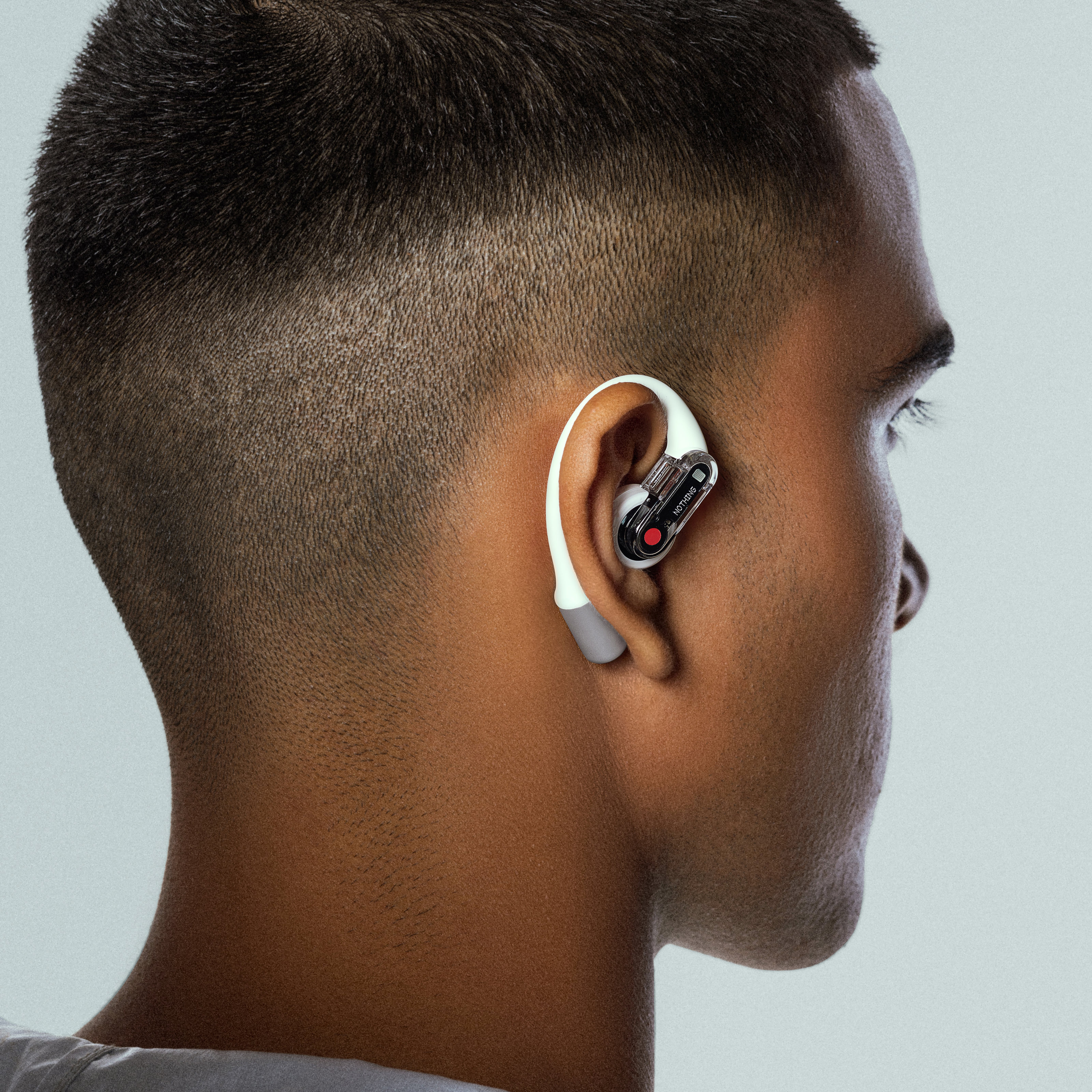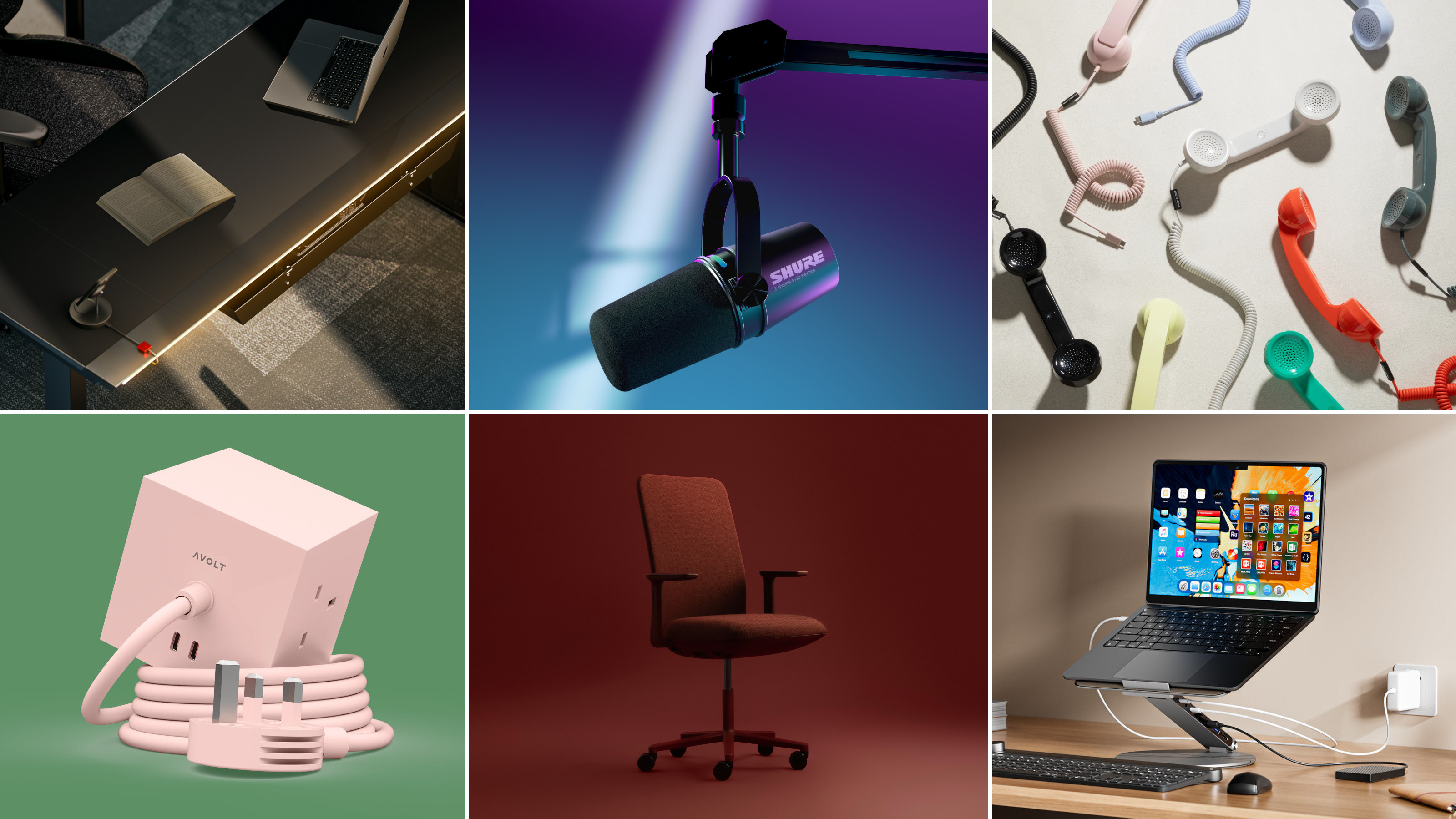All-new Nothing Ear (open) offers up a different kind of listening experience
If you find traditional earbuds cancel out too much of the outside world, Nothing has got you covered. We get down with the company’s new Ear (open) to experience this transparent new soundscape
It seems like only yesterday that Nothing was considered a new kid on the block in the tech space. Several offbeat but excellent smartphones later, as well as a collection of well received earbuds, the London-headquartered company has firmly established itself as a key alternative to the tech industry’s various established players.

Nothing Ear (open) in charge case
Next up in the Nothing ecosystem is this, the all-new Nothing Ear (open), an over-ear headphone design that does the exact opposite of snug-fitting, noise-cancelling earbuds. As the name suggests, Ear (open) is about transparency, but not the digitally filtered and processed kind. The device loops over each ear for stability, with speakers that hover just millimetres from your eardrum.

Nothing Ear (open) feels effortlessly light
Although it’s hard to discern with the naked eye, there’s a ‘Sound Seal System’ at work here, along with very directional speakers so as to minimise sound leakage for those around you. Those same people will relish not having to wave their arms around to attract your attention. Pinch controls on the body of the earpieces handles call answering, play/pause and volume adjustment.

Nothing Ear (open)
Ear (open) is positioned as a more engaged listening experience, something that works especially well when cycling or running, and for things like podcasts and audio books, where subtle nuances of production or instrumentation aren’t quite so important. What makes the new device even more attractive is the signature Nothing design, starting with the lozenge-like charge case.

Nothing Ear (open) in the charge case
Ultra slim, it still packs a bigger battery than usual to add up a total listening time of 30 hours. On their own, the buds themselves should be good for up to 8 hours of audio. The earpieces themselves retain Nothing’s transparent aesthetic and are neatly packaged in the case to make removal and stowage incredibly straightforward.

Nothing Ear (open) have ChatGPT integration
Other features include being able to integrate ChatGPT into your Nothing ecosystem (phone and earbuds) as an alternative to Google Assistance, while the Nothing X app also offers a more advanced sound equaliser function, as well as a bass enhance function. Voice calls are handled by two integrated microphones, carefully placed to avoid excessive wind noise. A game mode reduces lag, while Ear (open) can also be connected over Bluetooth to two devices simultaneously.

Nothing Ear (open): exploded view
That carefully balanced system, as well as the lightness of the buds themselves (8.1g each), make Ear (open) almost imperceptible when worn. The result are headphones that keep you cued in as to what’s going on around you. It’s very much a personal choice, of course, but anyone who leaves their earbuds firmly installed even once the music has stopped will be familiar with just how much real life is blocked out.
Receive our daily digest of inspiration, escapism and design stories from around the world direct to your inbox.

Nothing Ear (open)
Nothing Ear (open), $149 USD / £129 GBP / €149 EUR, Nothing.audio, @Nothing
Jonathan Bell has written for Wallpaper* magazine since 1999, covering everything from architecture and transport design to books, tech and graphic design. He is now the magazine’s Transport and Technology Editor. Jonathan has written and edited 15 books, including Concept Car Design, 21st Century House, and The New Modern House. He is also the host of Wallpaper’s first podcast.
-
 At last: a London hotel that’s great for groups and extended stays
At last: a London hotel that’s great for groups and extended staysThe July London Victoria, a new aparthotel concept just steps away from one of the city's busiest rail stations, is perfect for weekends and long-term visits alike
-
 Three new smartwatches showcase new frontiers in affordable timepiece design
Three new smartwatches showcase new frontiers in affordable timepiece designLong may you run: smartwatches from Withit, Kospet and OnePlus favour function and value above all else, demonstrating just how much the smartwatch has evolved in recent years
-
 Debuts, dandies, Demi Moore: 25 fashion moments that defined 2025 in style
Debuts, dandies, Demi Moore: 25 fashion moments that defined 2025 in style2025 was a watershed year in fashion. As selected by the Wallpaper* style team, here are the 25 moments that defined the zeitgeist
-
 Inspired by a pebble, the stylish new Alma charger provides pocketable convenience
Inspired by a pebble, the stylish new Alma charger provides pocketable convenienceWhat if technology could quietly allay anxiety and not cause it? That’s the pitch behind new luxury accessories company Addition, starting with its new Alma wireless charger
-
 The ring’s the thing as Pebble launches a discreet device for memo-taking, Index Ring 01
The ring’s the thing as Pebble launches a discreet device for memo-taking, Index Ring 01A tiny device with a singular purpose but limitless applications, the Pebble Index 01 is a customisable smart ring for turning mental notes into text
-
 Tech gift ideas: Wallpaper’s Jonathan Bell lists 12 devices to desire this festive season
Tech gift ideas: Wallpaper’s Jonathan Bell lists 12 devices to desire this festive seasonTechnology editor Jonathan Bell delves into the best new releases and most giftable gadgets from 2025, offering up personal favourites as well as a few big hints
-
 Samsung Galaxy Z TriFold is a pocket tablet that takes folding screens to new extremes
Samsung Galaxy Z TriFold is a pocket tablet that takes folding screens to new extremesSamsung has announced its newest flagship device, the Galaxy Z TriFold. Featuring three folding screens, this ultimate smartphone can transform into a ten-inch tablet
-
 Four new keyboards are fresh and functional desktop companions
Four new keyboards are fresh and functional desktop companionsMechanical keyboards are all the rage, bringing with them new ways of personalising your desktop. We’ve found four devices that hark back to the early days of computing
-
 Hunker down in a perfectly equipped work-from-home hub this winter
Hunker down in a perfectly equipped work-from-home hub this winterIf your WFH set-up needs an upgrade, or if you need to kit out a new small business from scratch, we’ve got you covered
-
 New Leica Q3 Monochrom camera sees the world in black and white
New Leica Q3 Monochrom camera sees the world in black and whiteDefined by its crisp 60MP monochrome sensor, the Leica Q3 Monochrom is a camera designed for those who want to focus only on light, shadow and form
-
 Apple Watch Ultra 3 has innovation at its heart – a 3D-printed titanium case
Apple Watch Ultra 3 has innovation at its heart – a 3D-printed titanium caseWe delve into Apple’s pioneering use of 3D-printed metal, and how it ties in with the company’s path to carbon neutrality
